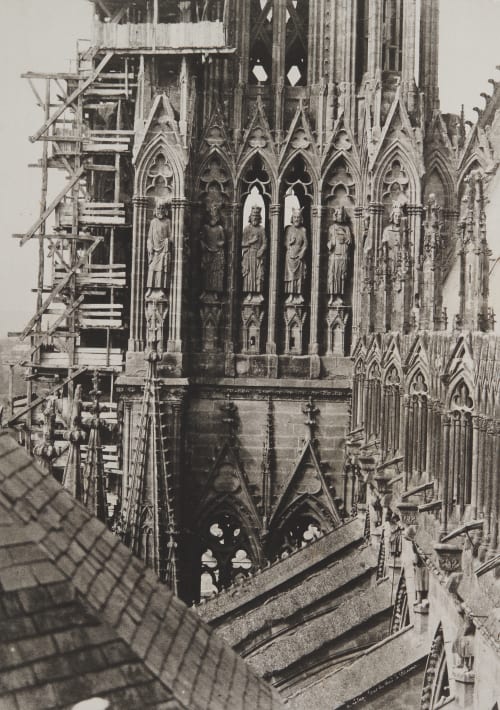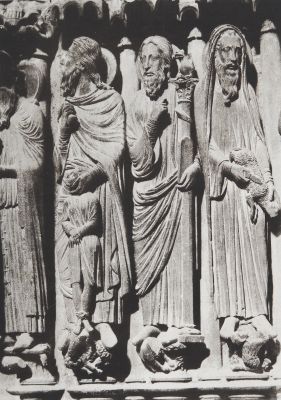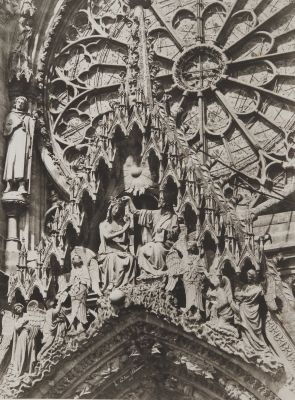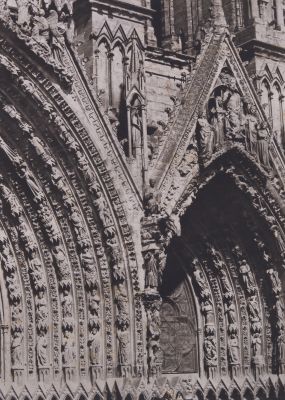
Title
La Galerie des Rois, Rheims CathedralArtist
Le Secq, Henri (French, 1818-1882)Publication
Fragments D'architecture Et Sculpture De La Cathédrale De ChartresDate
1879 plate (1851 negative)Process
PantotypieAtelier
Thiel Ainé & CieImage Size
24.5 x 34.8 cm
After leaving behind photography in the mid-1850s, Le Secq contacted Nègre in 1875, expressing his intentions to publish certain of his photographic series including his photographs of Chartres as reproductions in ink – par les encres grasses. His renewed interest constituted Le Secq’s final effort to permanently archive his work for the missions héliographique. By the 1870s, Nègre was producing less and less. Photomechanical printing had not make great strides since the late 1850s. Opting for the practicality of a more current form of photolithography patented by Thiel Aîné et Cie of Paris, called the Pantotypie, Le Secq published his portfolio of his Chartres photographs made more than twenty years prior.
Pantotypie appears to be a Collotype variant. In the description Thiel credits Poitevin’s use of bichromate and gelatin. In 1869 Pinel Peschardière produced prints referred to as “pantotypie.” It is unlikely that this was the same process. [1]
References
[1] Hanson, David A. Checklist of Photomechanical Processes and Printing, 1825-1910. , 2017. p. 136.
Buerger, Janet E. Le Secq’s "Monuments" and the Chartres Cathedral Portfolio. Journal of Photography ( Vol 23, No. 1, June 1980)
Janis and Sartre, Henri Le Secq Photographie de 1850 a 1860











